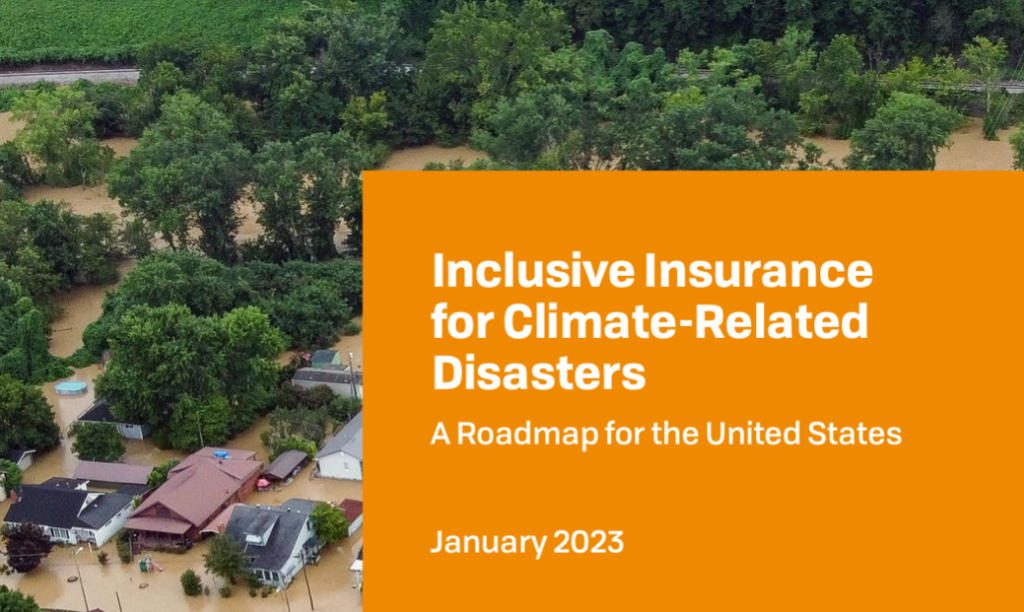This blog was authored by Environmental Defense Fund economist, Carolyn Kousky.
Facing $150 billion annually in direct costs from climate-related disasters, the current system of disaster recovery in the U.S. is failing many families and communities.
Most households struggle with timely access to sufficient financial support for the wide-ranging expenses disasters impose. And without adequate financial resources for recovery, natural disasters can become tipping points that set back hard-earned financial gains — especially for low-income households.
A new pilot program that just launched in New York City could help address gaps in assistance and increase equity in recovery. Supported by a National Science Foundation Civic Innovation Challenge award, the effort focuses on the delays low- and moderate-income households can face in accessing funds for immediate post-disaster needs, which can range from buying a generator to mold remediation to temporary housing.
The small pilot aims to get funds to people very quickly after a flood.
One in six adults in the U.S. in 2021 experienced financial hardship from a natural disaster and people with low incomes and people of color are disproportionally harmed by these events. Many households do not have enough savings to repair, rebuild, and recover, and low- and moderate-income households are often denied post-disaster loans. Federal disaster assistance is insufficient, can miss those who need it the most, and can be slow to disburse. Disaster insurance can provide funds for property repairs and reconstruction, but can be too expensive or unavailable, or may not meet the needs of certain populations.
A team that crosses sectors and expertise— including Environmental Defense Fund, the Center for NYC Neighborhoods, the New York City Mayor’s Office of Climate & Environmental Justice, SBP, Guy Carpenter, Swiss Re, and ICEYE — has been reimagining how to help low-income households with the growing risk of flooding from extreme rainfall. As heavy precipitation events increase, it imposes serious costs on households that are often unaware of the risk and lack needed financial resources.
Fast and flexible support after a disaster
Not receiving needed funding for weeks or months — as is the case with other sources of assistance — can be problematic for households without financial buffers or safety nets. To cover emergency expenses, for example, they may be forced to reduce spending on important things, such as medical care, or may fall behind on bills.
To increase the speed of assistance, the Center for NYC Neighborhoods, a nonprofit that promotes and protects affordable home ownership, is piloting a program that would make small emergency grants available immediately after a flood hits. This requires disaster financing that isn’t slow, cumbersome, or restricted. We turned to a special insurance-like tool to meet this need: parametric risk transfer.
Parametric risk transfer is an innovation that can provide fast and flexible dollars after a disaster. With a parametric product, a measurable event, such as wind speed at a certain location, automatically triggers a payout. This means funds become available incredibly quickly.
Our team worked to develop a parametric product that will pay the Center for NYC Neighborhoods when certain pilot neighborhoods flood following extreme rainfall. Rainfall flooding was fairly new to parametric markets, so we had to work with partners to determine the specific measurement that would trigger a payment. In the end, we settled on measurement of the footprint of the flood, determined by combining information from on-the-ground flood sensors, satellite data, and social media pictures and videos taken during the flood.
Here’s how the program will work: Once a severe flood happens in a pilot neighborhood, payment will quickly be sent to the Center for NYC Neighborhoods from a reinsurance company (for this pilot, Swiss Re). The center will use those funds to activate an assistance program of emergency cash grants to cover immediate post-flood needs while households wait for other forms of assistance that take longer.
An urgent need for new models of disaster recovery
Going forward, maintaining such a program will require a fundamental shift in disaster financing.
Many institutions, for example, are happy to donate relief funds following a disaster. If some donors would instead donate smaller amounts before a disaster to cover the costs of the premium on the risk transfer product, this could generate much greater payouts when a disaster occurs and reduce the amount of time it takes for nonprofits working on disaster recovery to receive funds.
We are testing one small pilot, but there are other innovative models that could also improve climate resilience and equity in recovery: microinsurance policies for households; coupling insurance to loans made by Community Development Financial Institutions; community-based models of disaster insurance; forecast-based financing; and others.
Now is the time to test these models, in partnership with researchers, in order to evaluate their effectiveness, and then refine their design to optimize their ability to meet social goals.
These new models are urgently needed. In our pilot, we have learned that designing a new approach takes committed partnerships, conversation, and dialogue. It takes collaboration between nonprofits, community groups, insurers and brokers, local governments, researchers, and data providers. It takes an ability to listen, a willingness to try something new, and a commitment to learn by doing.
The most important thing we’ve learned? We achieve more when we work together.










